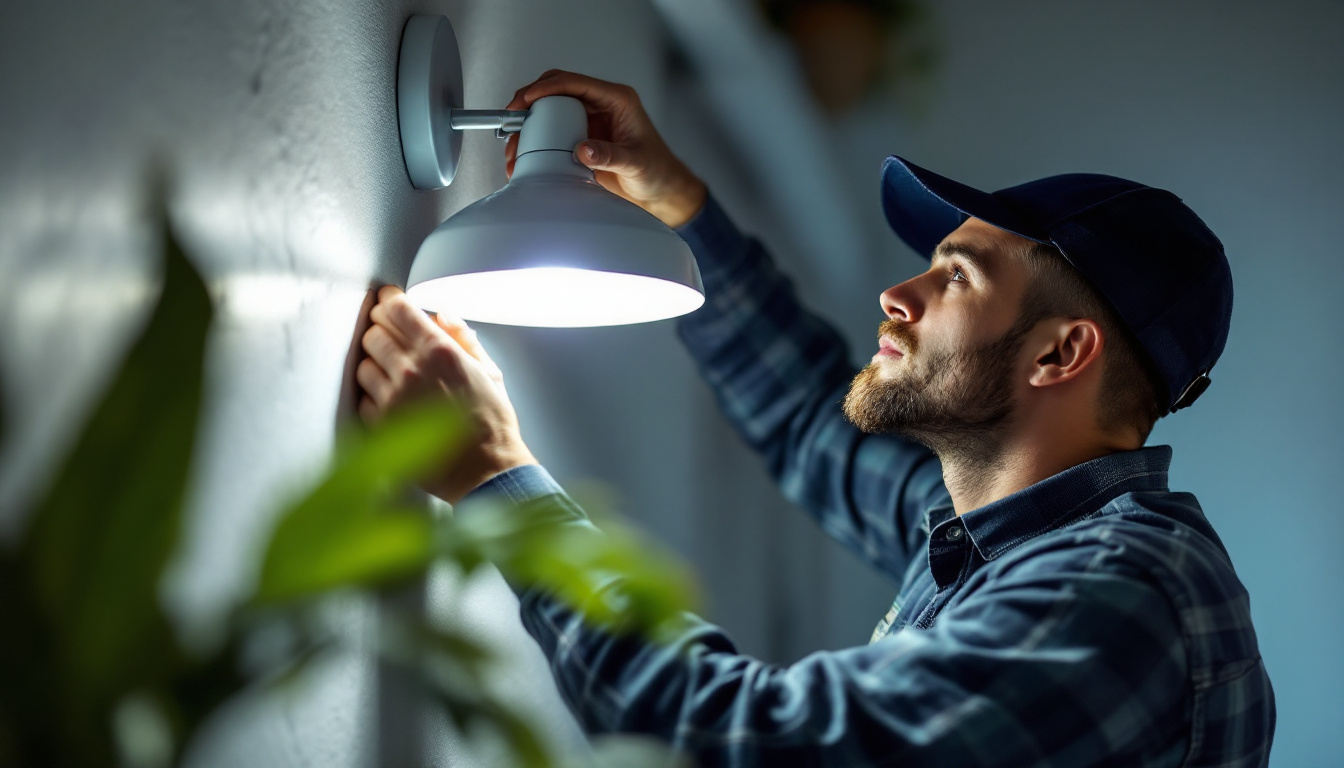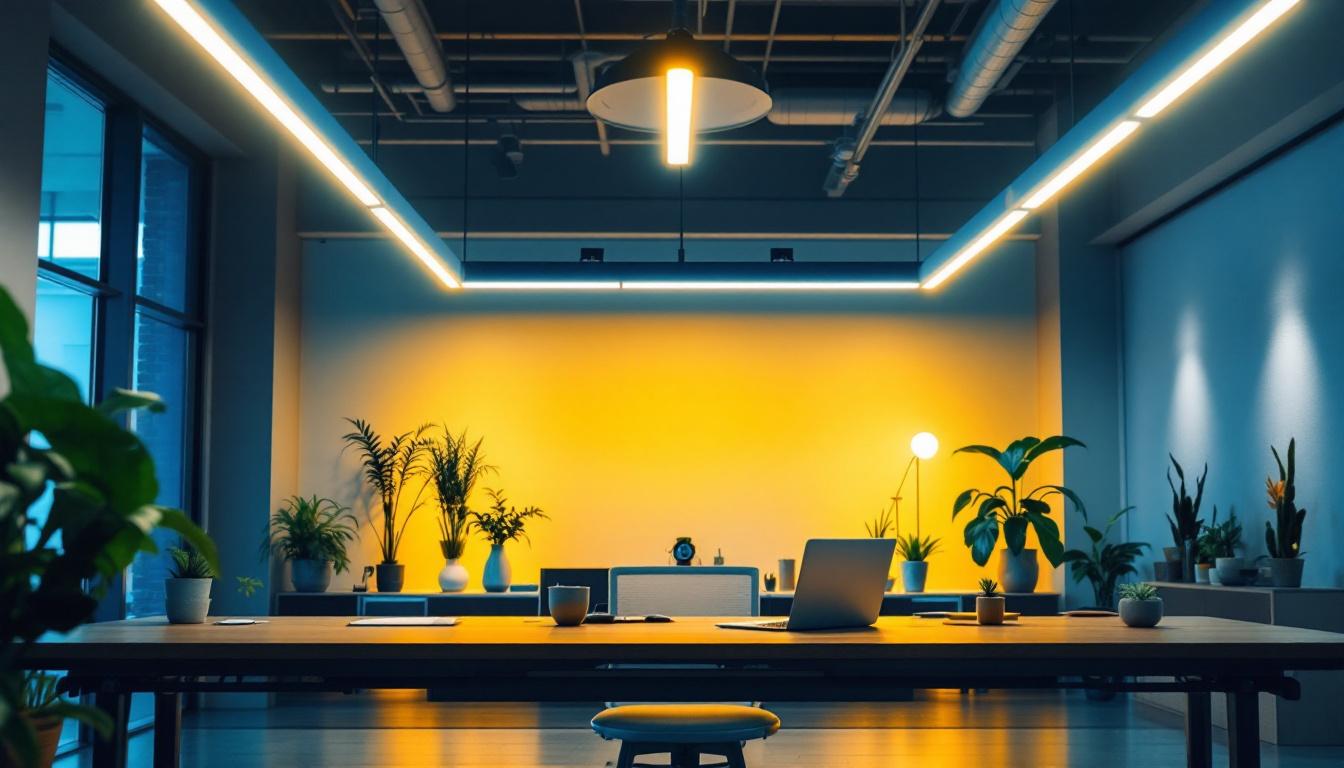
In the world of lighting design, mounted light fixtures play a crucial role in enhancing both functionality and aesthetics. For lighting contractors, understanding the nuances of these fixtures can significantly impact the success of a project. This article aims to provide valuable insights and practical advice for contractors working with mounted light fixtures.
Mounted light fixtures are versatile lighting solutions that can be affixed to walls, ceilings, or other surfaces. They come in various styles, sizes, and functionalities, making them suitable for diverse applications—from residential homes to commercial spaces. Familiarity with the different types of mounted fixtures is essential for contractors to effectively meet client needs.
There are several types of mounted light fixtures, each designed for specific purposes. The most common types include wall sconces, ceiling-mounted fixtures, and recessed lighting. Wall sconces are often used to create ambient lighting or highlight artwork, while ceiling-mounted fixtures can provide general illumination in a room. Recessed lighting, on the other hand, offers a sleek, unobtrusive option that can enhance the overall design of a space.
Additionally, contractors should be aware of specialized fixtures such as track lighting and pendant lights. Track lighting allows for flexibility in directing light where it is needed most, making it ideal for galleries or retail spaces. Pendant lights, often used over kitchen islands or dining tables, can serve as both functional and decorative elements. These fixtures come in a myriad of designs, from industrial to vintage, allowing homeowners to express their personal style while ensuring adequate lighting for their tasks.
When selecting mounted light fixtures, several factors must be considered. The intended use of the space, the desired ambiance, and the overall design theme are all critical elements that influence the choice of fixtures. For instance, a cozy living room may benefit from warm-toned wall sconces, while a modern office may require sleek, minimalistic ceiling fixtures.
Moreover, energy efficiency is an increasingly important consideration. Contractors should be knowledgeable about LED options, which not only consume less energy but also have a longer lifespan compared to traditional incandescent bulbs. This can lead to significant cost savings for clients in the long run. Additionally, the choice of color temperature in LED lights can dramatically affect the mood of a space; warmer colors can create a welcoming atmosphere, while cooler tones can enhance focus and productivity in work environments. Understanding these nuances allows contractors to provide tailored lighting solutions that meet both aesthetic and functional needs.
Furthermore, the installation process of mounted fixtures can vary significantly based on the type and location of the fixture. For example, wall sconces may require additional support if they are to bear the weight of heavier designs, while recessed lighting necessitates precise measurements to ensure proper alignment within the ceiling structure. Contractors must also consider the electrical requirements, ensuring that the existing wiring can support the new fixtures without compromising safety or functionality. This attention to detail not only ensures compliance with local building codes but also enhances the longevity and performance of the lighting installations.
Proper installation of mounted light fixtures is paramount to ensure both safety and functionality. Contractors must adhere to local building codes and regulations, which can vary significantly from one jurisdiction to another. Understanding these codes is essential for avoiding potential legal issues and ensuring the safety of the installation.
Before installation begins, thorough planning is necessary. This includes assessing the site, determining the best locations for fixtures, and ensuring that electrical wiring is up to standard. It’s also beneficial to create a lighting plan that outlines the placement of each fixture, taking into account factors such as room size, layout, and the purpose of the lighting.
Additionally, contractors should communicate with clients to understand their preferences and expectations. This collaborative approach can help prevent misunderstandings and ensure that the final outcome aligns with the client’s vision. Engaging clients in discussions about their lifestyle and how they intend to use the space can lead to more tailored lighting solutions. For instance, a home office might require adjustable lighting to accommodate different tasks, while a living room may benefit from ambient lighting that creates a cozy atmosphere.
When it comes to installation techniques, precision is key. For wall-mounted fixtures, it’s crucial to locate and secure the mounting brackets to wall studs whenever possible. This ensures that the fixtures are securely anchored and can support their weight without risk of falling.
For ceiling-mounted fixtures, contractors should verify that the electrical box is rated for the weight of the fixture being installed. Using the appropriate hardware and following manufacturer instructions will help ensure a safe and successful installation. Furthermore, it’s important to consider the type of light bulbs being used, as different bulbs can have varying heat outputs and energy requirements. For instance, LED fixtures are often more energy-efficient and produce less heat than traditional incandescent bulbs, which can influence the choice of fixture and its placement. Additionally, ensuring that the wiring is properly insulated and protected from moisture, particularly in areas like kitchens and bathrooms, can prevent electrical hazards and prolong the lifespan of the fixtures.
Lighting design is not just about functionality; it also encompasses aesthetics and mood. Contractors should have a solid understanding of how different types of lighting can influence the atmosphere of a space. This knowledge will enable them to make informed recommendations to clients.
One effective strategy in lighting design is layering light. This involves combining different types of lighting—ambient, task, and accent—to create a well-balanced and visually appealing environment. For example, in a living room, ambient lighting can be achieved through ceiling fixtures, while wall sconces can provide accent lighting to highlight artwork or architectural features. Task lighting, such as a reading lamp, can further enhance functionality.
Contractors should encourage clients to consider how they use each space and recommend fixtures that will meet those needs. By layering light effectively, contractors can help create spaces that are not only beautiful but also practical.
Another critical aspect of lighting design is understanding color temperature and brightness. The color temperature of a light source is measured in Kelvin (K) and can significantly affect the mood of a room. Warmer tones (around 2700K to 3000K) create a cozy and inviting atmosphere, while cooler tones (above 4000K) are often associated with a more clinical or energetic feel.
Brightness, measured in lumens, is also essential. Contractors should be prepared to discuss the appropriate brightness levels for various applications, ensuring that spaces are neither too dim nor overly bright. This knowledge can help contractors make informed decisions that enhance the overall user experience.
Despite the best planning and execution, contractors may encounter challenges when working with mounted light fixtures. Being prepared to address these issues can save time and ensure client satisfaction.
Electrical issues are one of the most common challenges faced during installation. This can range from outdated wiring to insufficient power supply. Contractors should be equipped to assess the electrical system and make necessary upgrades or adjustments. This may involve consulting with licensed electricians to ensure compliance with safety standards.
In some cases, it may be necessary to install additional circuits or upgrade the electrical panel to accommodate new fixtures. Being proactive in addressing these issues can prevent delays and ensure a smooth installation process.
Client preferences can sometimes pose challenges, especially if they change during the project. Effective communication is essential to navigate these situations. Contractors should establish a clear line of communication from the outset, encouraging clients to express their thoughts and concerns throughout the process.
Flexibility is also important. If a client requests a change, contractors should be prepared to adapt their plans while still maintaining the overall integrity of the project. This approach not only fosters a positive relationship with clients but also enhances the contractor’s reputation for professionalism and customer service.
Once mounted light fixtures are installed, ongoing maintenance is crucial to ensure their longevity and performance. Contractors should educate clients about proper care and maintenance practices, which can help prevent issues down the line.
Regular cleaning of light fixtures is essential to maintain their appearance and functionality. Dust and grime can accumulate over time, diminishing the quality of light and affecting the overall aesthetic. Clients should be advised to clean fixtures periodically using appropriate cleaning solutions and techniques.
In addition to cleaning, periodic inspections are important to identify any potential issues early on. This includes checking for loose connections, flickering lights, or signs of wear and tear. By addressing these problems promptly, clients can avoid more significant issues and costly repairs in the future.
As technology advances, upgrading light fixtures may become necessary to improve energy efficiency or enhance functionality. Contractors should stay informed about the latest trends and innovations in lighting technology, enabling them to offer clients the best solutions available.
Encouraging clients to consider upgrades can also be an opportunity for contractors to strengthen their relationships. By providing valuable insights and recommendations, contractors can position themselves as trusted advisors in the lighting industry.
Mounted light fixtures are a fundamental aspect of lighting design, and understanding their intricacies is essential for lighting contractors. From selecting the right fixtures to ensuring proper installation and maintenance, contractors play a vital role in creating well-lit spaces that meet client needs.
By staying informed about the latest trends, technologies, and best practices, contractors can enhance their skills and provide exceptional service. Ultimately, a commitment to excellence in every aspect of the job will lead to satisfied clients and a successful lighting contracting business.
Ready to elevate your lighting projects with the finest fixtures on the market? Look no further than LumenWholesale for a vast array of spec-grade lighting products at unbeatable wholesale prices. Say goodbye to local distributor markups and hello to top-quality lighting that meets the highest industry standards. With LumenWholesale, you’ll enjoy the convenience of free shipping on bulk orders, ensuring you get the premium lighting you need at the best value. Make the smart choice for your lighting contracting business and experience the perfect blend of quality, affordability, and convenience with LumenWholesale.

Discover how LED lights are revolutionizing office environments with energy efficiency, enhanced productivity, and sustainable design.

Discover the latest advancements in 4-foot fluorescent light bulbs and why staying informed is crucial for lighting contractors.

Discover the common pitfalls lighting contractors face when converting fluorescent tube lights to LED.

Discover essential tips for lighting contractors to avoid common pitfalls in LED lighting projects.